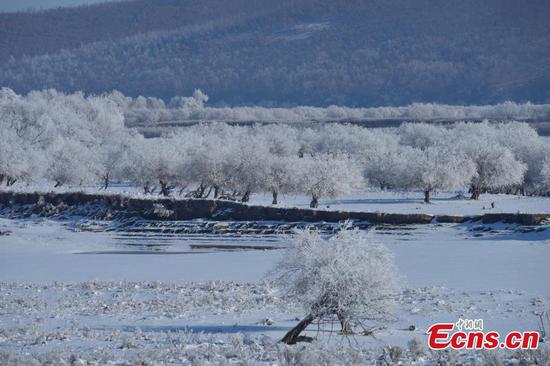China has established its first National level Climate Investment and Finance Association. It's the latest move in line with the Paris Accord, and is being done in the hopes of providing further support to fight climate change.
As the world's second largest economy, China has set up clear targets to combat climate change.
By the end of 2018, China had reduced its carbon density by over 45 percent, also raising the proportion of non-fossil energy levels to 14.8 percent, very close to the 2020 target of 15 percent.
Over the past seven to eight years, China has been the largest renewable energy investor, "34 percent of installed volume and over 40 percent of newly installed volume are all in China. From 2005 to 2018, China reduced carbon dioxide emissions by over five billion tonnes," said Li Gao, Director of Department of Climate Change, Ministry of Ecology and Environment of China.
On Tuesday, China established its first national level climate investment and finance association in Beijing. The group aims to point professional institutions toward better climate investment and finance activities with technical support, while the CIFA will also broadly carry out international cooperation, which has already been underway.
"Working with China is always a learning experience, its like a pilot that we can replicate in other countries," said Sujata Gupta, Director of Sustainable Energy Division, East Asia Department, ADB.
The World Bank declared in 2018 that it will spend 200 billion U.S. dollars from 2021 to 2025 to support climate action globally.
"We have some good examples," according to Martin Raiser, Country Director for China, Mongolia and Korea, one of the project is World Bank worked with Hebei Province in a pollution reducing program. "Where we invest a little bit of money, but Hebei Province invests a lot more and together we achieve much better results."
Based on the commitment made under the United Nations Framework Convention on Climate Change, developed countries will transfer 100 billion US dollars every year before 2020 to help developing countries cope with climate change.
Yet, as China's special representative on climate change affairs, Xie Zhenhua said on Tuesday, the fund received by developing countries is merely over 38 billion U.S. dollars.
The result is an expanding financing gap in Asia, which according to the Asian Development Bank, will reach a high of some 450 billion U.S. dollars.
"China will not hold back because it is a developing country, we will work hard. We will do what we need to do in terms of our stage of development, our actual capacity and our obligations to contribute to the global response to climate change. On the other hand, we will not carry the burden of developed countries, who have so far fallen short of their promises in implementing emission reductions and providing financial resources," said Li Gao.
Even with the resources invested, China still faces tough challenges to meet the 2030 goal, especially given that it is still a developing country, with the GDP per capita short of the average ratio globally.


















































